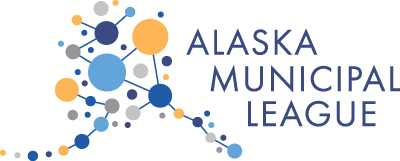Friday’s discussion by the Legislature about the ferry system and school bond debt reimbursement, if we just focus on the statements made for or against, point to a high level of support for both, and a general concern for local government.
In fact, in both case, the role of local governments was front and center. Thus, it seems appropriate to try and capture some of the arguments.
One of the main arguments against had to do with the process – whether this was best addressed in a veto override, whether the body could split the question, and whether there are better opportunities in the supplemental budget or other mechanisms. Clearly, for those who offered support for both issues, the supplemental budget seemed the more appropriate mechanism. That should be encouraging, since within the supplemental budget the Legislature is still able to address the urgency of both issues.
School Bond Debt Reimbursement
There were two main arguments here. First, that with the State’s fiscal crisis, we couldn’t afford it. That makes sense, but also is a strong argument for addressing the fiscal crisis outside of cuts, especially when it comes to Constitutional obligations of the State. We can’t afford it, then, becomes less a justification for cuts and more a fairly critical need to work to afford the areas that the State is Constitutionally required to.
The other argument, which may have less merit, is that school districts are sitting on $500 million in savings. Okay. Here’s a good explanation of why that’s true – http://www.alasbo.org/wp-content/uploads/2019/04/Fund-Balances-Best-Practices-White-Paper-Apr19.pdf. Essentially, national best practice and State Statutes govern minimum and maximum levels of these funds, and determine the restrictions on their use. Maybe more important in response to this argument is that:
- The municipality, and not the school district, is the one responsible for paying school bond debt. The bond is in their name, as the taxing authority.
- Municipalities, then, will choose between increasing taxes, reducing their contribution to other programs, or spending down reserves.
- Those who have chosen to spend down reserves are often utilizing funds reserved for school maintenance, which increases the need for State support of school construction and maintenance (this has been funded at 16%, on average, over the last 10 years)
- Where taxes are increased, in response, this either came this year or will next, as local governments have different budget cycles.
- Local governments are very different, so where some can cover the difference, there are at least four who have very few options.
Alaska Marine Highway System
We heard strong emotive responses to this issue that speaks to the respect that the Legislature accords to residents in need. Clearly, legislators were worried about the condition of the System and expressed interest in trying to address the challenges that communities were facing.
There was overwhelming support – almost consensus – on doing something. The bigger question was what and how.
We heard these arguments against addressing the critical need now, outside of the process question:
- Residents made lifestyle choices – here we would point to the difference between lifestyle and livelihood. The region served by the AMHS is home to the State’s largest private sector employer, and two of the largest economic drivers outside of oil and gas. The fishing and tourism industries are not inconsequential. This might be better framed as residents made job choices. It can be argued that the ferry makes these jobs possible.
- Other communities have only an airport – this is more an argument for addressing needs in those communities only serviced by air, than depriving a thriving economic engine of the state its multi-modal infrastructure. There are good arguments for reducing costs and increasing frequency of infrastructure in order to bring down transaction costs of doing business in these communities.
- My constituents don’t benefit – sometimes this is hard to see. The research that’s been done references both the total statewide economic impact, and the ridership outside coastal communities. There are strong economic linkages to Anchorage, the Mat Su, Denali, and the Kenai, which go well beyond seeing a ferry terminal in a community.
- Can’t deploy assets – a statement from AMHS suggesting that they couldn’t utilize that additional funding should beg the question, “Why?” Including an analysis of how that funding may be deployed, and what other impediments may also need to be addressed, at least places the Legislature in a good position to work on next steps. Adding that funding back in at least eliminates one barrier.
- Not enough money – there is definitely a fiscal gap still to address, but if funding is to be requested for a supplemental anyways, then it’s clear that adding more funding will be necessary. Let’s work on addressing revenues so that when it comes to these priorities, we know the State has the resources to meet the needs that its obligated to.
- Need for long term solutions – Definitely! The fact there needs to be a long-term solution developed does not remove the urgency of the short-term. The State needs both to be able to meet the needs of businesses and residents. Local government leaders have committed to contributing to long-term solutions, but that doesn’t mean they can ignore the gaps in service that are challenging their constituents today.
Overall, from a local government perspective, this debate is an early indicator of the value of cities and boroughs to the State, and the interest within the Legislature to address current challenges. We’re looking forward to next steps on these issues, and to working toward solutions together.
